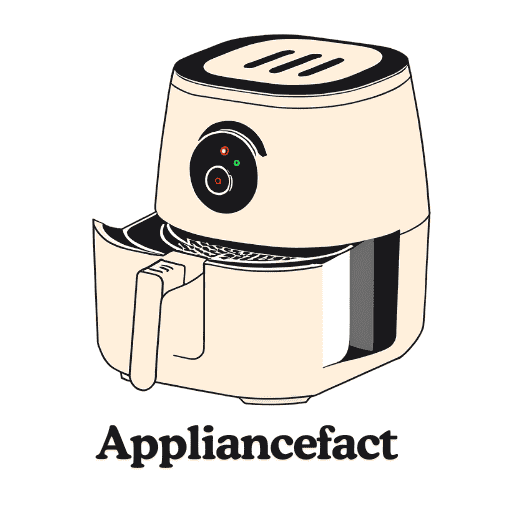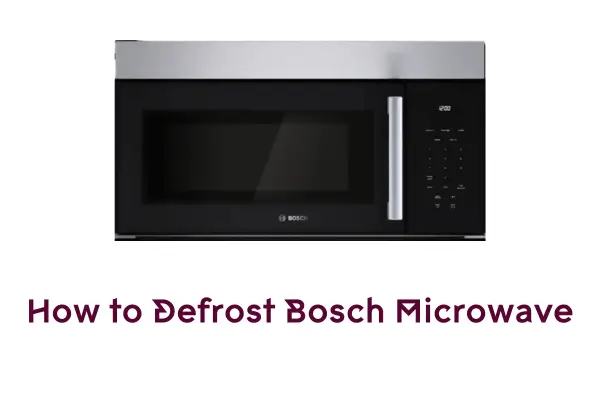Have you ever tried to thaw dinner only to end up with cold spots in the middle? I get it. I struggled, too, until I learned How to Defrost Bosch Microwave for quick, even results. After many messy meals, I found simple steps that keep food tender and safe. We’ll dive into power levels, timing, and a few tricks I’ve picked up. Ready to say goodbye to half-frozen dinners? Let’s tackle defrosting together!
Contents
Understanding Bosch Microwave Defrosting Features
Bosch makes microwaves in all shapes and sizes. They all help you thaw food fast. Some have big displays, while others stick to simple knobs.
Most Bosch units include an Auto Defrost button. It reads your food’s weight and picks the best thaw time. You can also choose Manual Defrost if you want more control. Many models let you tweak power levels for gentle warming.
I use a Bosch Series 4 microwave at home, and it’s a lifesaver. Sometimes, I freeze leftover curry or dumplings for busy nights. The auto-defrost keeps my food moist and fresh. It beats my old brand by miles.
How Bosch Microwave Defrosting Works
Bosch’s Auto Defrost Mode is like having your sous-chef. It checks your food’s weight and then picks the perfect thaw time. No more guesswork or poking half-frozen chunks in the middle of cooking.
Manual defrosting is excellent for delicate treats like pastries or thin fish fillets. You pick the time and power level to thaw your food in gentle waves instead of blasting it with full force. Bosch models often let you drop the power to about 30%, which helps your food warm up from edge to centre without any hot spots.
I’ve used Auto Defrost for big chicken breasts, and they always turn out ready for marinating. But when I wanted to soften a slice of homemade pumpkin pie, Manual Defrost was my best friend. I dialled down the power to avoid a rubbery crust. It felt good to have control, and the pie tasted fresh-baked.
Step-by-Step Guide on How to Defrost Using a Bosch Microwave
Step 1: Preparing the Food
Remove all plastic or paper wrapping, then place the food on a sturdy, microwave-safe plate. This helps heat pass through every part of the food and prevents soggy patches. I like to pat the meat dry with a paper towel so it doesn’t release too much steam during defrosting. It reminds me of when I forgot to do this, and the moisture made my chicken rubbery.
Step 2: Selecting the Right Defrost Setting
Check your Bosch microwave’s menu for the defrost option that best suits your food: meat, poultry, fish, or bread. Each setting adjusts power and time for that specific type. I usually pick the poultry option for chicken and find it thaws evenly. If I’m handling something delicate like fish, I stick to the fish defrost mode so it doesn’t cook the edges.
Step 3: Setting the time
A general rule is 20-30 minutes per pound for meat and around 10-12 minutes for fish. These times can vary depending on the thickness and your microwave’s power. I once found my chicken needed a few extra minutes because it was still iced in the middle. Over time, you’ll get a feel for how your Bosch unit handles different foods.
Step 4: Monitoring the Defrosting Process
Open the door every few minutes and check the texture. Rotate or flip the food if you see any cold spots. I learned this after a few dinners where the centre stayed frozen while the outside started cooking. A quick turn halfway through can make all the difference.
Step 5: Finalizing Defrosting
To avoid over-defrosting, stop the cycle a bit before the food is fully thawed and let it rest for a minute or two on the countertop. This pause helps the chill work its way out of the centre. I once over-defrosted shrimp for a stir-fry and ended up with mushy spots, but letting them rest earlier could have saved me from that mishap.
Common Mistakes to Avoid While Defrosting in Bosch Microwave
Over-defrosting happens when I run the microwave too long. The outside may start to cook while the centre is still cold. Stopping the cycle early and letting the food rest keeps flavours and textures just right.
Defrosting food in its original wrap can lock in steam and lead to soggy or overheated spots. Removing all packaging before placing the food on a safe plate or tray is best. This also stops chemicals from seeping in and keeps the meal fresh.
Uneven defrosting is another big hurdle. One side might be warm while the other remains icy. Rotating your food halfway or using a defrost tray helps heat spread evenly.
I remember an early mishap with a pack of frozen dumplings. I left them in their plastic wrap, so the top layers got mushy while the bottom froze solid. Once I figured out that simple step removing packaging and flipping them once or twice I never had that problem again.
Conclusion
I have covered the significant steps: choosing the right setting, timing your food, and avoiding sneaky mistakes like over-defrosting. With a Bosch microwave, you can thaw meat, fish, or even bread without juggling guesswork. It feels easy once you know the routine, and your dinners always come out fresh.
I used to stress over icy centres or rubbery edges when defrosting. Now, my Bosch microwave takes care of most of the work. It saves me time, keeps my food juicy, and has turned rushed weeknight meals into something I actually enjoy cooking. Once you try these tips, you’ll see.
Related articles

